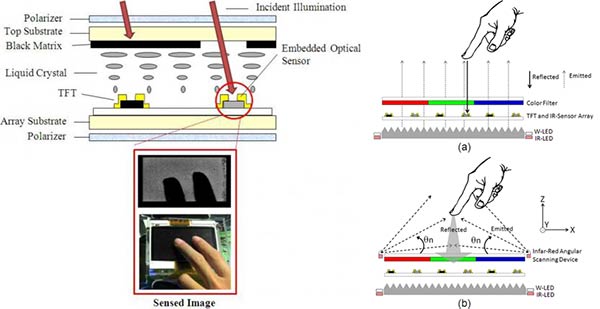A recent study published in a an issue of the IEEE's Journal of Display Technology, by Gue-Zhen Wang from the National Chiao Tung University in Taiwan, has demonstrated a 3D 'Air-Touch' system which allows users to touch floating 3D images displayed by a mobile device, reports Phys.org. The system opens up a wide range of novel applications, the scientists say.
"The 3D Air-Touch system in mobile devices can offer non-contact finger detection and limited viewpoint for operating on a floating image, which can be applied to 3D games, interactive digital signage and so on," said Wang. "Although current technology still has some issues, such as yield rate, sensor uniformity and so on, we predict that this technology could become available in the near future."

Whilst the interactive system is not so much a new innovation, implementing it on small mobile devices has always been a harder challenge than on larger screens. Most 3D systems we see in the market today require additional devices or cameras for motion detection purposes, which is inconvenient for mobility. Cameras on mobile devices also limit the field of view and most 3D systems require fairly bright lighting in order to capture movements with accuracy.
In order to come up with a solution around all the restrictions, Wang has designed a 3D system where optical sensors are embedded in the display pixels in a 4-inch display screen. An infrared backlight is also incorporated into the device whilst angular scanning illuminators are added to the edges o the display to provide lighting.

In the study, Wang has demonstrated an overall good performance in experiments testing the 3D Air Touch system. The 3D touch prototype has a depth range of 3 cm with maximum error of 0.45 cm at large depths and smaller errors for smaller depths. So at the moment the Jenga blocks tower in the illustration (top) could only, in reality, be 3cm tall... The researchers claim that the stated range can be increased by improving the sensor sensitivity and scanning resolution. It's currently a single-touch system due to the difficulties in dealing with occlusion effects using such a compact sensor system.
For more in-depth information on the science behind the system click here to visit the IEEE Explore website.













